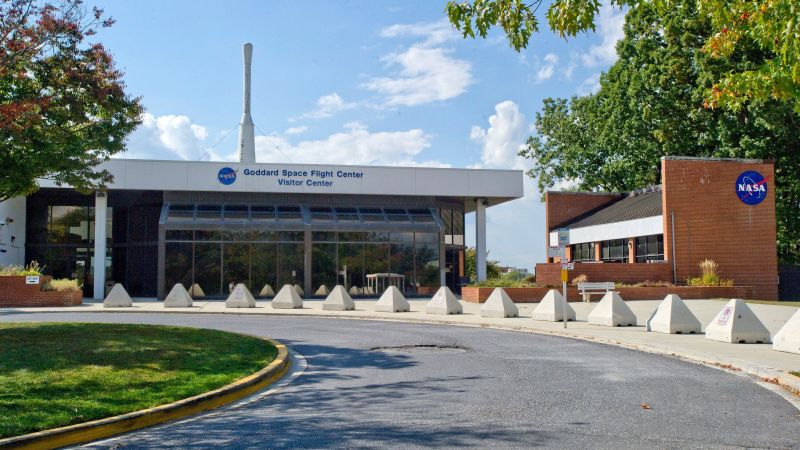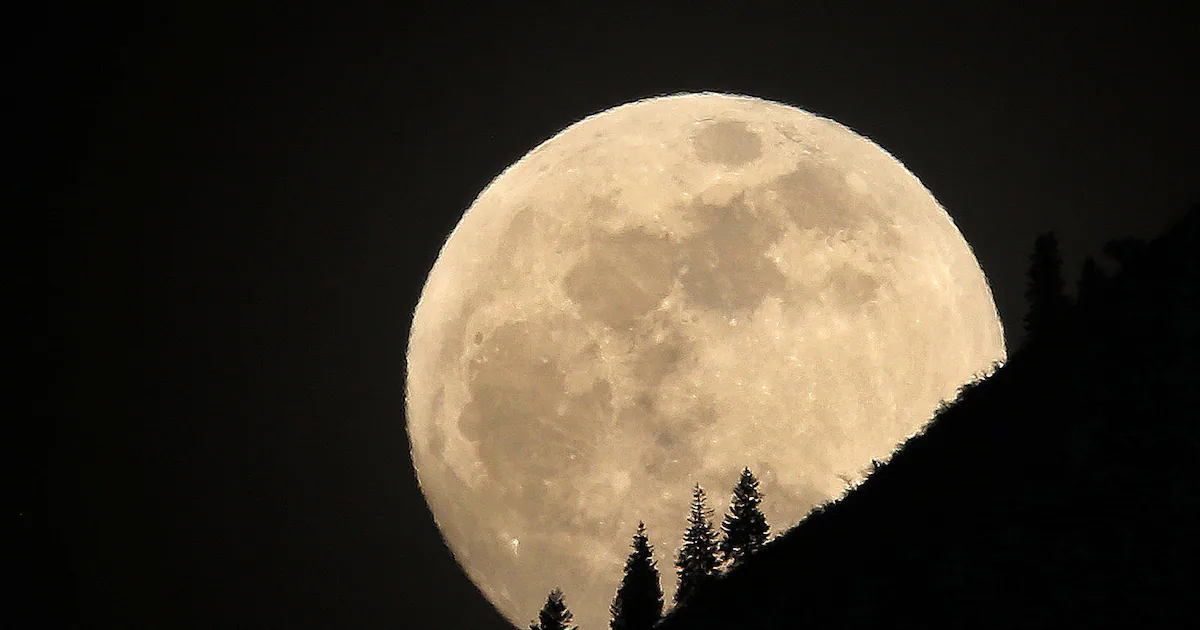Copyright Cable News Network

Alarm is growing among federal workers at NASA’s iconic Goddard Space Flight Center’s main campus in Greenbelt, Maryland — the nerve center for groundbreaking missions like the Hubble and James Webb space telescopes — as more than a dozen buildings on the campus are being emptied and padlocked during the federal shutdown, with very little notice to employees, said four sources who spoke to CNN on the condition of anonymity for fear of retribution. NASA leadership has pushed back against those concerns. In one instance, furloughed employees were given just days to temporarily return to work and help empty entire buildings of highly specialized equipment, according to sources and internal emails obtained by CNN. In the communications, NASA managers wrote that equipment not moved in time — including one-of-a-kind hardware — could be thrown away or donated. In a statement, a NASA spokesperson said the building closures are part of a “strategic consolidation” plan mapped out by Goddard leaders that should not impact ongoing projects. But some of the sources CNN spoke with say they fear the sudden moves are part of an effort by President Donald Trump’s administration to quietly gut the Maryland Goddard campus while the government remains unfunded — a claim the spokesperson denied. Trump’s April budget proposal would have slashed the center’s funding and workforce, including reducing Goddard’s science staff by 42%. Funding bills passed by congressional lawmakers since then have largely excluded the President’s proposed science cuts. “Getting rid of Goddard removes the entire nation’s capability to build, develop and analyze data from space science satellites,” one Goddard engineer, who asked to remain anonymous, told CNN. One document reviewed by CNN, which was compiled by more than a dozen Goddard workers concerned about the steps taken at the campus, states that 13 buildings are being shuttered, including about 100 laboratories. The roughly 1,270-acre campus includes more than 30 large buildings and dozens of smaller structures. Uncertainty around the closures has left workers perplexed and concerned that management is moving forward with plans to enact sweeping cuts before Congress passes a funding bill. In their statement, the NASA spokesperson said that the agency is “planning for multiple FY26 scenarios” — including the president’s budget request — “but it is important to note that NASA has and will continue to comply with the law.” ‘A devastating loss’ The changes described by sources have the space agency’s engineers concerned they could permanently lose access to equipment and facilities that are crucial to keeping current and future projects on track. The closures could impact the 2027 launch of the Nancy Grace Roman Space telescope, a powerful successor to the Hubble and James Webb telescopes that could revolutionize scientists’ understanding of the cosmos and the beginnings of the universe, two sources told CNN. Roman is a “super Hubble” that can take full sky surveys in space and is meant to study potentially habitable planets and dark matter. Sources told CNN the closures could also affect NASA’s Dragonfly program, which aims to send a car-size helicopter to study Saturn’s largest moon for signs of habitability and is scheduled to launch in 2028. Both Roman and Dragonfly received continued funding and support even in the President’s budget request. Beyond those two more imminent projects, sources told CNN the sudden changes at Goddard this month could severely hurt space science and exploration in the next decade. “Stopping development of what’s in the pipeline now, you’re cutting off the next three decades of missions to explore the universe, to learn more about the planets and to learn more about the Earth,” the Goddard engineer said. “It’s a really devastating loss to think about for the country.” In a separate statement to CNN on Monday, the NASA spokesperson said that “Dragonfly and Roman will remain operational as their excepted work continues throughout the shutdown,” noting leadership does not expect projects to be delayed by the Goddard Greenbelt campus changes. ‘Taking a Maserati to the junkyard’ Goddard and NASA leadership had already been working through a master plan — hashed out years ago — to revamp the Goddard campus, aiming to cut costs and eventually modernize some of the center’s aging infrastructure. However, several of the buildings currently being emptied are not scheduled to be closed until the early 2030s, according to documents and first-hand accounts from sources. And workers say they haven’t seen signs of new laboratories being constructed or renovated, as is spelled out in the master plan. The NASA spokesperson said in their statement that “Goddard leadership proposed and was approved to initiate a consolidation of buildings at the Greenbelt and Wallops campuses” earlier this year. The new plan was hashed out in response to an exodus of employees who took deferred resignations. About 841 Goddard employees took such offers this year, the spokesperson said. “Buildings vacated were approximately 40% unoccupied on average,” the spokesperson’s statement reads. One building that has been shuttered, however, houses Goddard’s ElectroMagnetic Anechoic Chamber, or GEMAC, a one-of-a-kind radio-proof room that is essential for testing spacecraft antennas before they are launched. Components for NASA’s Davinci mission, slated to conduct an unprecedented study of Venus after launch in the early 2030s, were set to be tested in the GEMAC, a source noted. And closing the facility would have far broader implications, impacting untold numbers of current and future projects because the unique design of the GEMAC allows for the testing of large pieces of communications equipment that would not fit in other, similar facilities, the source noted. “It’s like taking a Maserati to the junkyard to get crushed because your driver’s license expired,” another source said. “The GEMAC is fully operational and could go on for many more years to support in-house, out of house, and the industry (like it has for several decades).” A NASA spokesperson said the GEMAC was in poor condition and would remain closed. The Davinci spacecraft could be tested in alternative facilities, the spokesperson said, and no other projects were slated to move through GEMAC for testing in the next 15 years. Sources told CNN, however, that they were concerned GEMAC was the only facility of its kind with an expansive doorway suitable for accommodating large pieces of hardware — and decommissioning the facility would have a long-term impact on NASA’s spacecraft testing capabilities. ‘Sabotage’ Another building that is being emptied on Goddard’s campus includes labs for teams that have been working on the Roman telescope’s propulsion subsystem, one of the sources told CNN. “In terms of future missions, once this lab goes away, we won’t be able to do anything like it again,” one Goddard employee said. That employee questioned whether the cost of moving equipment from one building to another, possibly misplacing or throwing away equipment in the process, was actually saving Goddard and the federal government money. “I can’t understand why our management would want to internally sabotage our capabilities,” the source said. “They haven’t communicated any rationale other than they’re trying to save money, but the things they’re doing don’t actually seem to save money.” Infrastructure and equipment slated to be given away or disposed of at Goddard cannot be easily replaced, sources said. Alleged ADA violations Some of the workers who spoke to CNN also raised concerns that shuttering offices and ordering furloughed workers to return to the office to pack boxes may violate the Antideficiency Act, or ADA. The ADA is a federal law that impacts how shutdowns should be carried out and stipulates that “employees cannot ‘volunteer’ their services to agencies — i.e., provide services without payment — except in very limited circumstances,” such as being “necessary to protect human life and government property,” according to a government definition. In a statement, the NASA spokesperson said “two exceptions were approved to mainta in our schedule for facility movements throughout the shutdown.” Those exceptions mostly involved moving technical equipment, not office spaces, the spokesperson said, and “over 100 office space moves have been put on hold until the government reopens.” The statement also denies that any of the building closures or return-to-work directives related to the changes violate federal laws. Still, employees have also been left wondering why the moves needed to take place when so many employees remained furloughed and unaware of how sensitive hardware was being handled. It’s also unclear whether employees who were asked to help with the moves will ever be compensated for returning to work to move boxes. “We’re in this shutdown that is not like every other shutdown,” said Charles Tiefer, a former acting general counsel for the US House of Representatives and a professor emeritus at the University of Baltimore School of Law. Tiefer also noted that Trump has already said he is considering not giving back pay to all federal employees once the government shutdown ends, a stark departure from precedence. “My circle of people fell out of our chairs when we heard that,” he added, referring to attorneys and experts familiar with government spending laws. ‘An existential crisis’ The purported chaos at Goddard is further affecting the morale of an employee base that has been reeling from job losses, looming budget cuts and discordant communication from leadership, the sources who work at the center told CNN. Goddard in particular has been a hotspot of contention in an already tumultuous year for the space agency. The center’s leader, Makenzie Lystrup, abruptly resigned in July on the same day hundreds of scientists and current and former NASA employees signed a declaration lambasting what they perceived as “rapid and wasteful changes” being implemented under the Trump administration. Some NASA scientists were also angered and confused earlier this year over the decision to cancel a lease for the Goddard Institute for Space Studies — an offshoot laboratory located in New York City. Goddard has been involved in all of the space agency’s moon rovers and has sent spacecraft to Jupiter and other planets in the solar system. Employees at the center said that if the campus is seriously crippled or shut down altogether, it will be a massive loss to the US space program and hamper scientists’ efforts to better understand the universe. “Not many people are sending missions to Jupiter except for NASA Goddard,” the Goddard employee said. “It’s not profitable, so private industry wouldn’t do it. “It feels like an existential crisis; Goddard will either no longer exist at all or no longer exist the way it should.”



